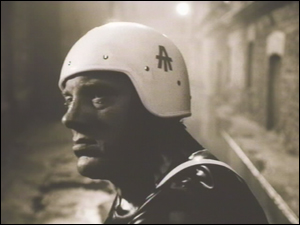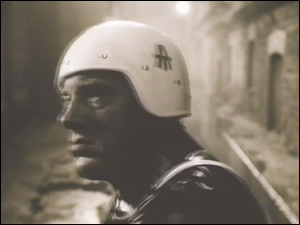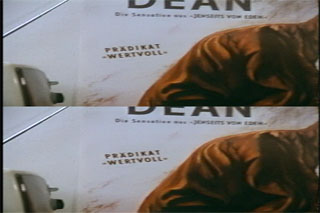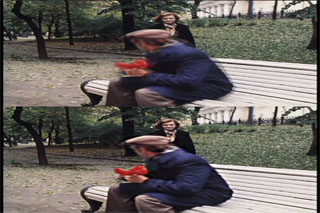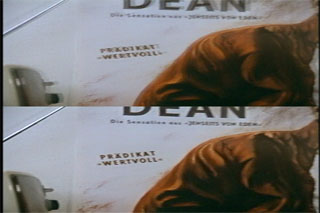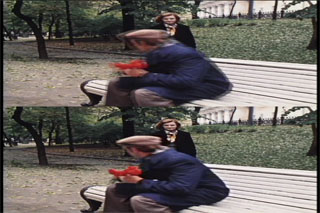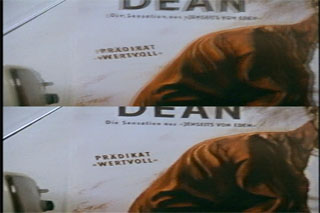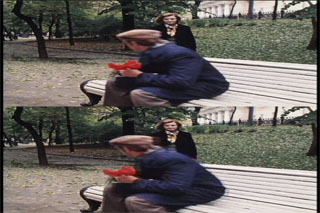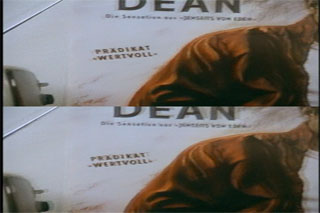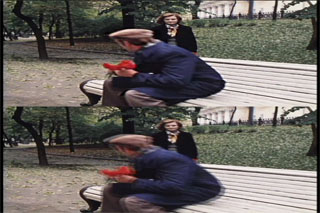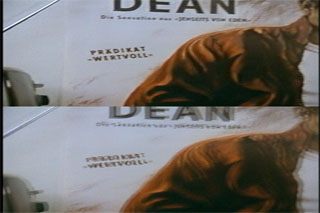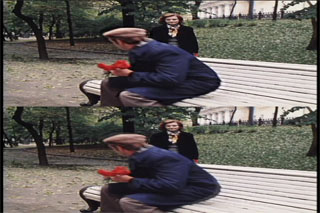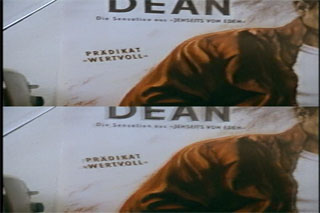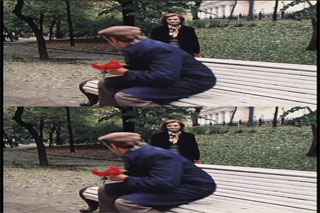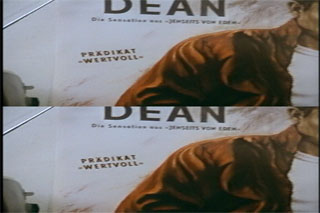
Nostalghia.comShould I buy the PAL or the NTSC version?Many thanks to Andrey Diment for contributing significantly this article. The large Kino and RusCiCo framegrab series below were originally prepared by Andrey Diment for the DVDBeaver ListServ. Thanks also to Ted Todorov for helpful advice. Take, for example, the Russican Cinema Council's DVD editions of Stalker and Mirror. They are available in NTSC versions (e.g., directly from RusCiCo or, in the case of Stalker, through Image Entertainment in the USA) and PAL versions (e.g., from Artificial Eye in the UK). The PAL version suffers, of course, from "PAL speedup" — the inevitable penalty associated with transferring 24 frames-per-second (fps) film to 25 fps video. The film thus runs 4% too fast, with a correspondingly shorter total runtime. But so does the NTSC version, indicating that the NTSC version has (regrettably) been produced based on a PAL video source, preserving the unfortunate PAL speedup straight through to the NTSC stage (PAL masters can be inexpensively made in Moscow, proper NTSC masters would have to be made abroad at a fairly high price... which would cut into profit margins). Both DVD versions of the film thus have the same runtime and they both run 4% too fast. So, does it at all matter which version you decide to spend your hard-earned money on? The answer, as will be demonstrated below, is "yes, it does matter." For the purposes of this article, we assume that you live in NTSC-land and that you have the capablity to play both PAL and NTSC DVDs, a capability that can now be purchased for a price less than two Criterion DVDs.Look at the following two still frames from Stalker (showing the famous AT monogram), as displayed on an interlaced NTSC monitor. On the left we have a still frame taken from the PAL disc (Artificial Eye) with PAL-to-NTSC conversion performed by a cheap DVD player (Malata) capable of making such a conversion on-the-fly (presumably by simply repeating every Nth frame). On the right we have the same frame taken from the NTSC version of the DVD (Image Entertainment), wherein PAL-to-NTSC conversion has of course already been done for us, by RusCiCo themselves.
Watching on a standard interlaced TV-set, one cannot see any noticeable difference between the two while the DVDs are playing, but in still frame mode it becomes evident that the RusCiCo conversion is done by periodically inserting frame interpolation ("double exposures") of varying proportions. The frame grab shown on the right catches both overlapping images at some appropriately weighed relative intensity. This is normally considered desirable, as during playback it makes the motion more fluid, but it does ruin still frames by creating the characteristic "ghosting" effect seen in the still on the right (click to enlarge). As mentioned, one cannot see any difference while in "play" mode, so there does not seem to be any obvious advantage to the RusCiCo "high-tech" conversion. But are there any identifiable disadvantages to this type of conversion? The answer is yes. First, let us point out that the conversion method used by RusCiCo is not unique in any way. It is a highly common algorithm (similar in nature to a telecine process), one that is used by most major distributors, such as Kino and FoxLorber/Wellspring. The below side-by-side comparison, prepared for us by Andrey Diment, of a RusCiCo NTSC DVD title (Moscow Does Not Believe in Tears) and a Kino NTSC DVD title (Conspirators of Pleasure) shows that the pattern used is the same in both cases. The fields (odd and even) of each interlaced video frame are here presented separately (one on top of the other), to better help us see what is going on. Click on a frame capture to view it in full resolution, click a second time to revert back to the small size (click on the numerals near the captures if you have problems with JavaScript).
Note that the first and last frame of each sequence are "clean." The other frames contain fields that are blended with neighbouring fields. We would like to point out two major problems with this process:
As already mentioned, there may very well be no discernible difference between the two types of conversion while watching the material in play mode on a standard TV-set. But watching the DVDs on a computer monitor, or on one of the increasingly popular progressive scan devices, is quite another story. For instance, sequences in which the camera pans quickly tend to look awful on such displays when watching PAL-sourced NTSC encoded discs.
Nostalghia.com recommends that, whenever possible, PAL-sourced NTSC versions be avoided.
Whenever an NTSC DVD suffers from PAL speedup, it's a sure sign that one should try to obtain the PAL version. People in NTSC-land can view these on
a multi-system monitor/TV/projector or else get an inexpensive (less than $100) DVD player
with built-in on-the-fly PAL-to-NTSC conversion. |

